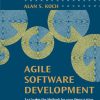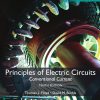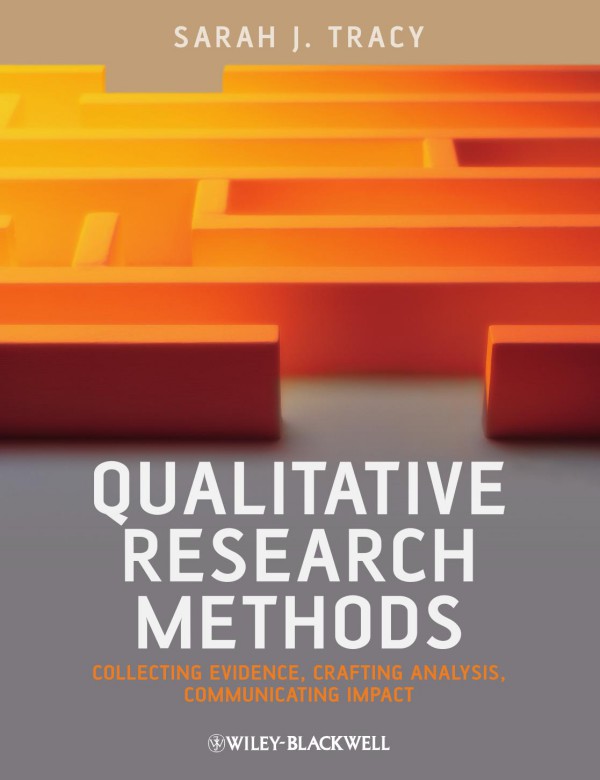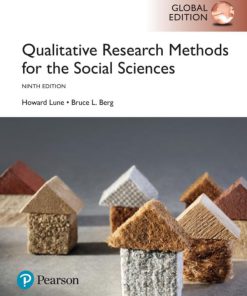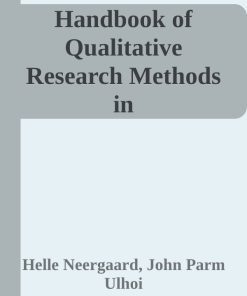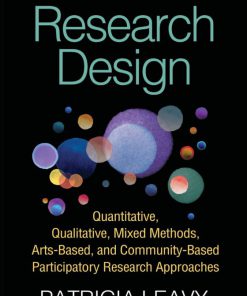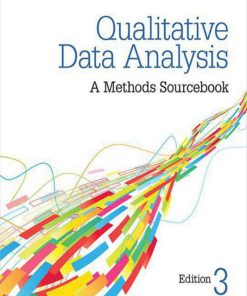Qualitative Research Methods Collecting Evidence Crafting Analysis Communicating Impact 1st Edition by Sarah Tracy 140519202X 9781405192026
Original price was: $50.00.$25.00Current price is: $25.00.
Authors:Sarah J. Tracy , Series:Education [75] , Tags:Language Arts & Disciplines; Communication Studies; Social Science; Media Studies , Author sort:Tracy, Sarah J. , Ids:9781119390787 , Languages:Languages:eng , Published:Published:Aug 2019 , Publisher:John Wiley & Sons , Comments:Comments:QUALITATIVE RESEARCH METHODS THE DEFINITIVE STEP-BY-STEP RESOURCE FOR QUALITATIVE AND ETHNOGRAPHIC RESEARCH Qualitative Research Methods: Collecting Evidence, Crafting Analysis, Communicating Impact is a comprehensive guide on both the theoretical foundations and practical application of qualitative methodology. Adopting a phronetic-iterative approach, this foundational book leads readers through the chronological progression of a qualitative research project, from designing a study and collecting and analyzing data to developing theories and effectively communicating the results–allowing readers to employ qualitative methods in their projects as they follow each chapter.Coverage of topics such as qualitative theories, ethics, sampling, interview techniques, qualitative quality, and advice on practical fieldwork provides clear and concise guidance on how to design and conduct sound research projects. Easy-to-follow instructions on iterative qualitative data analysis explain how to organize, code, interpret, make claims, and build theory. Throughout, the author offers her own backstage stories about fieldwork, analysis, drafting, writing, and publishing, revealing the emotional and humorous aspects of practicing qualitative methods.Now in its second edition, this thorough and informative text includes new and expanded material covering post-qualitative research, phenomenology, textual analysis and cultural studies, gaining access to elite and difficult to access populations, persuasive writing, novel interviewing approaches, and more. Numerous examples, case studies, activities, and discussion questions have been updated to reflect current research and ensure contemporary relevance.Written in an engaging and accessible narrative style by an acclaimed scholar and researcherOffers new and updated examples of coding and qualitative analysis, full-color photos and illustrations, and a companion instructor websiteSynthesizes the most up-to-date multidisciplinary literature on qualitative research methods including seven main approaches to qualitative inquiry: grounded theory, case study, ethnography and ethnography of communication, phenomenology, narrative inquiry and autoethnography, participatory action research, and creative, performative, and arts-based researchPresents innovative qualitative data collection methods and modern representation strategies, such as virtual ethnography, photovoice, and mobile interviewingQualitative Research Methods: Collecting Evidence, Crafting Analysis, Communicating Impact is an ideal resource for undergraduate and graduate students, instructors, and faculty across multiple disciplines including the social sciences, healthcare, education, management, and the humanities, and for practitioners seeking expert guidance on practical qualitative methods.


